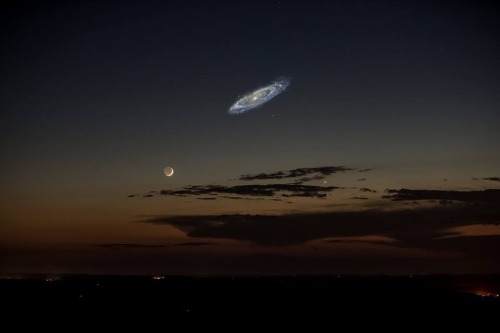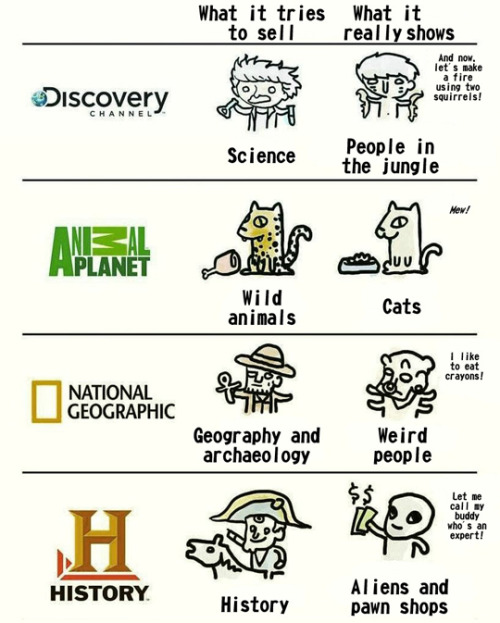Andromedasbitch-blog - Spacey

More Posts from Andromedasbitch-blog and Others

Here’s something for you to start the week off with a bang. This is a computer simulation of a supernova event, the moments when a massive star collapses in on itself to evolve into a neutron star. The violent and knobbly shock wave from the collapse expands out in a fraction of a second, with the coldest gas in the model colored blue and the hottest colored red. Ejected stellar material moves away from the core at speeds that can reach almost 19,000 miles per second.
The simulation was created in 2012 by the Simulating eXtreme Spacetimes (SXS) Project. Now, direct observations of a supernova called 1987A using NASA’s Nuclear Spectroscopic Telescope Array has confirmed a detail found in the model–that the collapse leads to a lopsided ejection of debris in one direction and the stellar core into another.
Read more from Caltech about how models predicted that perfectly spherical star cores evolve into asymmetric blobs with plumes of broiling hot gasses powered by neutrino emissions.

(Hubble Space Telescope captured supernova 1987A with a bright ring of material ejected from the dying star before it detonated. The ring is being lit up by the explosion’s shock wave.Credit: ESA/Hubble & NASA.)
Keep reading










Favorite Movies Meme: 1/? Interstellar (2014)
“Maybe it means something more - something we can’t yet understand. Maybe it’s some evidence, some artifact of a higher dimension that we can’t consciously perceive. I’m drawn across the universe to someone I haven’t seen in a decade, who I know is probably dead. Love is the one thing we’re capable of perceiving that transcends dimensions of time and space. Maybe we should trust that, even if we can’t understand it.”


Death and Rebirth
On July 4, 1054 A.D, a bright new star appeared in the sky. Although it was 6,500 light-years away from Earth, it shone brighter than whole galaxies and was visible in daylight for 23 days. Little did the astronomers of the day know, the “new” star was actually the violent death of an old star: a supernova explosion. Stars more than ten times the mass of our sun will eventually become supernovas when they die. For their whole lives, they battle to balance energy trying to get out and gravity trying to crush them in under their own weight—but when they run out of fuel to burn, gravity wins. The star’s core collapses and its very atoms are crushed, emitting an enormous shockwave that flings heavy elements out into space. The remnants of this particular supernova formed the enigmatic Crab Nebula, an energetic cloud spanning five light-years, with each different colour representing different chemicals: orange is hydrogen, red is nitrogen, green is oxygen… And at the centre of the nebula lies the remnant of the exploded star. Gravity has squashed all the empty space out of it, leaving an incredibly dense object called a neutron star—just 20 km across, but with the mass of our sun, so on Earth, one teaspoonful would weigh one billion tons. Rotating neutron stars are known as pulsars, and this one spins at a rate of 30 times per second, sending out violent jets of particles at nearly the speed of light.
(Image Credit: 1, 2)

Forever yawning.


I was convinced these were mountains on Joy Division’s cover. *you learn something new every day*




Gurl Horoscopes August 2014
-
 jexanna reblogged this · 9 years ago
jexanna reblogged this · 9 years ago -
 andromedasbitch-blog reblogged this · 9 years ago
andromedasbitch-blog reblogged this · 9 years ago -
 andromedasbitch-blog liked this · 9 years ago
andromedasbitch-blog liked this · 9 years ago -
 thetrushbehindit-blog reblogged this · 9 years ago
thetrushbehindit-blog reblogged this · 9 years ago -
 thetrushbehindit-blog liked this · 9 years ago
thetrushbehindit-blog liked this · 9 years ago -
 handspringss reblogged this · 10 years ago
handspringss reblogged this · 10 years ago -
 handspringss liked this · 10 years ago
handspringss liked this · 10 years ago -
 atico---mental reblogged this · 10 years ago
atico---mental reblogged this · 10 years ago -
 bluehairpsycho reblogged this · 10 years ago
bluehairpsycho reblogged this · 10 years ago -
 shes-sucha-charmer-oh-no liked this · 10 years ago
shes-sucha-charmer-oh-no liked this · 10 years ago -
 irresistivelilusao reblogged this · 10 years ago
irresistivelilusao reblogged this · 10 years ago -
 antiksziluett reblogged this · 10 years ago
antiksziluett reblogged this · 10 years ago -
 vercsepp reblogged this · 10 years ago
vercsepp reblogged this · 10 years ago -
 dulzuraheather reblogged this · 10 years ago
dulzuraheather reblogged this · 10 years ago -
 youreyesinmyhead reblogged this · 10 years ago
youreyesinmyhead reblogged this · 10 years ago -
 jazzclash liked this · 10 years ago
jazzclash liked this · 10 years ago -
 gozelka reblogged this · 10 years ago
gozelka reblogged this · 10 years ago -
 shayyynnnaaa liked this · 10 years ago
shayyynnnaaa liked this · 10 years ago -
 elchicodelaterceracita reblogged this · 10 years ago
elchicodelaterceracita reblogged this · 10 years ago -
 dominnvicc reblogged this · 10 years ago
dominnvicc reblogged this · 10 years ago -
 wildstorm96 liked this · 10 years ago
wildstorm96 liked this · 10 years ago -
 williamblood-blr reblogged this · 10 years ago
williamblood-blr reblogged this · 10 years ago -
 williamblood-blr liked this · 10 years ago
williamblood-blr liked this · 10 years ago -
 misselvisbish reblogged this · 10 years ago
misselvisbish reblogged this · 10 years ago -
 dazy-fae reblogged this · 10 years ago
dazy-fae reblogged this · 10 years ago -
 qu3le-blog-blog reblogged this · 10 years ago
qu3le-blog-blog reblogged this · 10 years ago -
 iyorbe35 liked this · 10 years ago
iyorbe35 liked this · 10 years ago -
 tsoltegstel-blog reblogged this · 10 years ago
tsoltegstel-blog reblogged this · 10 years ago -
 angxlla liked this · 10 years ago
angxlla liked this · 10 years ago -
 fractal-sir reblogged this · 10 years ago
fractal-sir reblogged this · 10 years ago -
 cold-cold-morning reblogged this · 10 years ago
cold-cold-morning reblogged this · 10 years ago -
 br3akingthegirl420 liked this · 10 years ago
br3akingthegirl420 liked this · 10 years ago -
 takewhatyouneed0074 reblogged this · 10 years ago
takewhatyouneed0074 reblogged this · 10 years ago -
 takewhatyouneed0074 liked this · 10 years ago
takewhatyouneed0074 liked this · 10 years ago -
 seasons-in-thee-abyss-blog-blog reblogged this · 10 years ago
seasons-in-thee-abyss-blog-blog reblogged this · 10 years ago -
 delirious-mistake3 reblogged this · 10 years ago
delirious-mistake3 reblogged this · 10 years ago -
 delirious-mistake3 liked this · 10 years ago
delirious-mistake3 liked this · 10 years ago -
 ptrick09 reblogged this · 10 years ago
ptrick09 reblogged this · 10 years ago